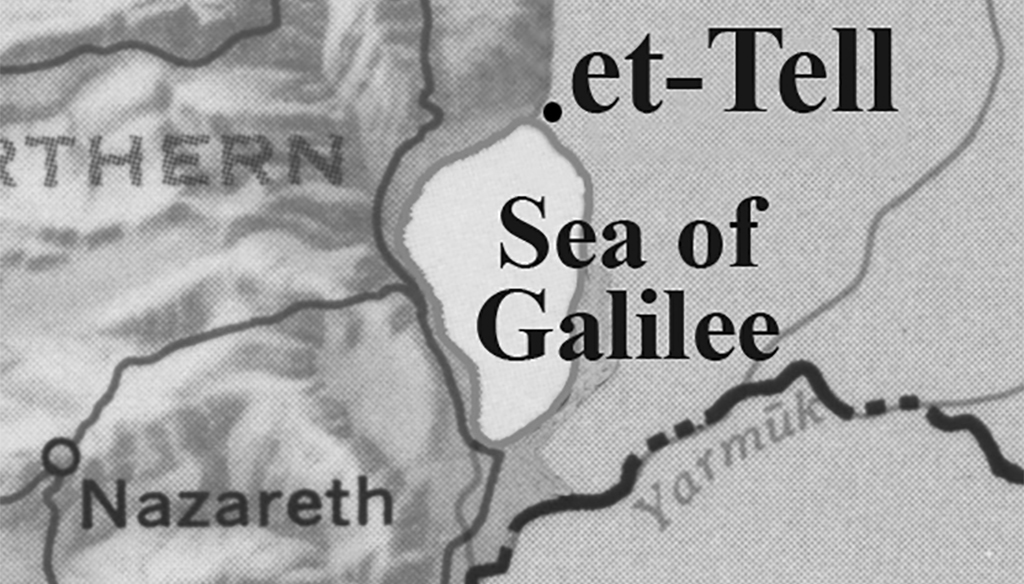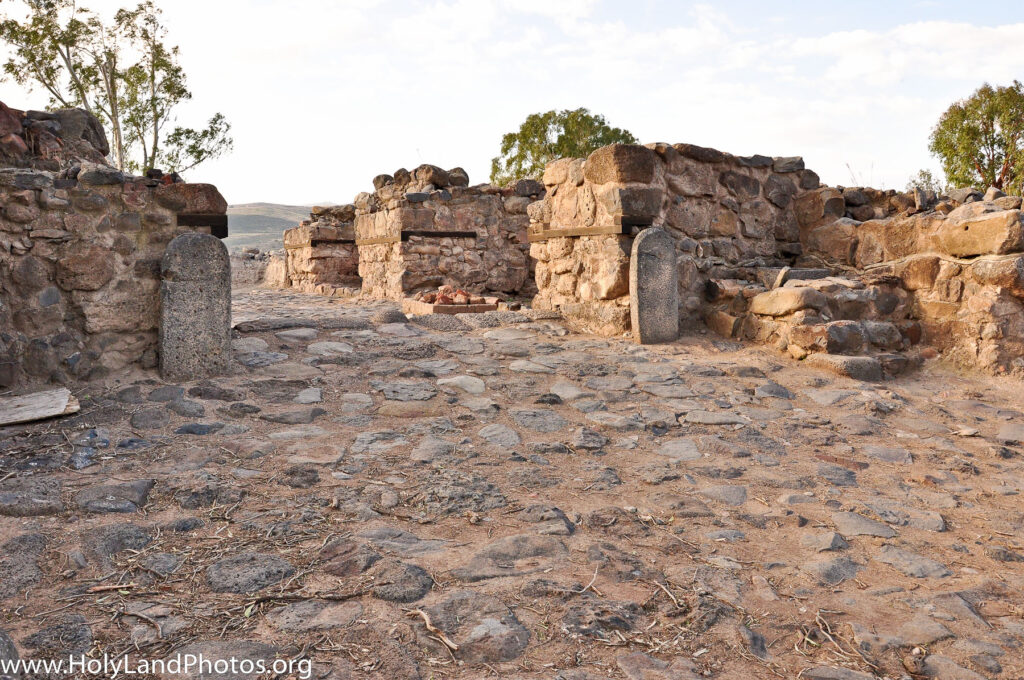 How can one of the most prominent cities in the ministry of Jesus disappear for over 1700 years? In the New Testament, Bethsaida was the location of the feeding of the five thousand (Luke 9:12-17); where Jesus cured a blind man (Mark 8:22-25); and where He walked on the Sea of Galilee (Mark 6:45-51). Bethsaida was the home of the disciples Philip, Andrew, and Peter (John 1:44).
How can one of the most prominent cities in the ministry of Jesus disappear for over 1700 years? In the New Testament, Bethsaida was the location of the feeding of the five thousand (Luke 9:12-17); where Jesus cured a blind man (Mark 8:22-25); and where He walked on the Sea of Galilee (Mark 6:45-51). Bethsaida was the home of the disciples Philip, Andrew, and Peter (John 1:44).
Bethsaida was also included in this startling judgement by Jesus:
Then he began to reproach the cities in which most of his deeds of power had been done, because they did not repent. “Woe to you, Chorazin! Woe to you, Bethsaida! For if the deeds of power done in you had been done in Tyre and Sidon, they would have repented long ago in sackcloth and ashes” (Matthew 11:20-23).
Is this the reason the location of Bethsaida was unknown for seventeen centuries?
As early as 1838, it was suggested that perhaps et-Tell (“the Mound”) was the ancient city of Bethsaida. There were two problems with this suggestion, however:
- How could et-Tell be the fishing village of the New Testament when it is one-and-a-half miles from the Sea of Galilee shoreline?; and
- The site of et-Tell sits just east of the Jordan River in the Golan region, but the Gospel of John states that Bethsaida was in Galilee (John 12:21) which is west of the Jordan.

Archaeological excavation since 1987 have revealed that today’s shoreline of the Sea is not necessarily the ancient shoreline. The base of the et-Tell mound has lake clays containing microorganisms of a type suggesting that at one time Bethsaida was right on the water. How did the city get one-and-a-half miles from the current shoreline? Likely two causes. First, et-Tell sits on one of the world’s most active fault lines. Earthquakes could shift the channel of the Jordan River to the east of the city to put Bethsaida in Galilee, or west of the city putting the city in the Golan. A major earthquake did occur there in A.D. 363, which swept a vast amount of basalt boulders, rock, gravel, and soil across the plain on which et-Tell lies, cutting Bethsaida off even further from the Sea of Galilee shoreline.
Second, rivers carry silt downstream and deposit it at the mouth of the river forming a delta. The current city of Ephesus in Turkey is six miles from the water of the Aegean Sea but was on the water at the time of the apostle Paul in the first century. This phenomenon can also explain the inland location of ancient Bethsaida (et-Tell) today.

.
The history of Bethsaida goes back to the time of David in the tenth century. It thrived and waned in the intervening centuries but enjoyed one last revival period at the time of Jesus. According to Jewish historian Josephus, Philip, son of Herod the Great, elevated the importance of Bethsaida in A.D. 30 by building a temple there in honor of Julia, wife of the emperor Augustus, and Livia, mother of the then-reigning emperor, Tiberius. He then renamed the city Julia-Livia.
The changes in the Galilee shoreline placed Bethsaida farther and farther from the lake, hiding it from archaeologists and Christian pilgrims who looked for it on the Sea of Galilee shoreline. By the fourth century the city was abandoned where it slumbered in silence for over 1700 years. The historicity of the New Testament was affirmed when it was rediscovered within the last two decades.


